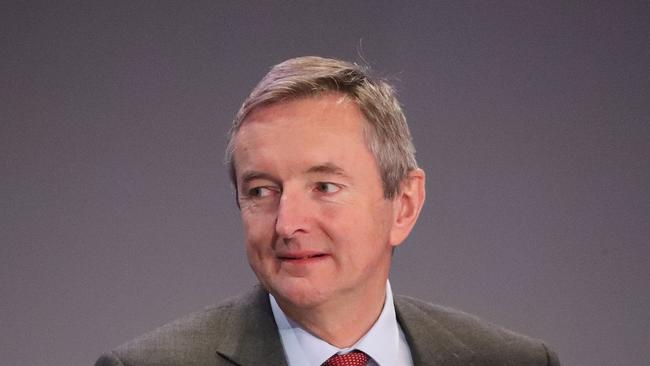
That was the clear message from the Rio chairman on Monday, as the company released its board review of the destruction of the 46,000 year old heritage site.
If it were Juukan Gorge alone, it’s possible the Rio chairman’s position would be sustainable.
But despite the Rio chairman telling reporters on Monday his CEO has had a “great year” amid the coronavirus crisis, Juukan Gorge is only the latest of a litany of problems at the mining giant.
Under the leadership of Jacques and Chris Salisbury, the company’s iron ore division has lost its crown as the best run in the world to BHP, with Fortescue a narrow second.
Not only has its operational performance fallen away, by comparison to its peers, but years of undercapitalisation mean that Rio will now have to spend up to $US1.5bn a year to sustain its operations in the Pilbara.
As a direct comparison, in the first half of 2016 Rio’s Pilbara mines produced 158.9 million tonnes of iron ore at an average unit cost of $US14.30 a tonne. In the first half of this year, they produced 700,000t more, at an average cost of $US14.50/t.
Its 2016 first-half earnings margins from iron ore were 58 per cent on an average realised iron ore price of $US48.40 per dry metric done, compared to 72 per cent EBITDA margins in 2020 at an average $US85.10/dmt, before freight costs.
Anyway you measure it, the company’s flagship division is barely better off than it was four years ago when Jacques took charge.
Then there’s Simandou. Jacques launched the offer to sell the Guinean iron ore deposit to partner Chinalco in 2016 for $US1.3bn, but the agreement lapsed two years later.
Since then Rio has been comprehensively outmanoeuvred by China Inc, which is pressing ahead with its development, and Rio is now in a position it may be forced into a massive capital spend on a project that will eventually undermine its own Pilbara operations.
The failure to get a sale of its Pacific Aluminium assets away in 2017 has left Rio in a position in which it is now trying to win support for discounted power for the facilities at a time when its political and social capital is at long-term lows.
It’s two diamond mines are fading fast, with no replacement in sight despite Jacques often-stated desire to continue Rio’s presence in the industry.
And its copper division isn’t faring much better – aside from the problems at Oyu Tolgoi, Rio disclosed last week its Kennecott mine in Utah has suffered yet another smelter failure, forcing it to cut 30,000t from its annual copper guidance.
In the first half of 2016 Rio produced 282,300t of copper, compared to 265,700t in the first half of 2020.
Rio’s growth options are looking pretty limited as well. Aside from Simandou, its expansion of Oyu Tolgoi in Mongolia remains stuck in the mire.
Its Resolution copper project in Arizona is winding itself through the tortuous US permitting process, now made far more difficult as traditional owners of the site also point to Rio’s Juukan Gorge disaster and ask why the company is ignoring the heritage issues they have raised.
Rio’s other hope for growth, an expansion into smaller mines and specialist commodities through Rio Ventures – set up under Jacques – is still yet to get the company’s board to agree to a deal despite kicking the tyres of practically every mid-tier mine and miner on the planet.
The sole bright light on Rio’s development horizon is the Winu copper discovery in the Pilbara – which looks far smaller than mines the company once would have championed.
Simon Thompson is right about one thing. The blame for Juukan – and the rest of Rio’s problems – can’t be laid at the feet of Jacques, Simone Niven and Chris Salisbury alone.
When you’re running operations that last for decades, decisions made 10 years ago often linger around to haunt the current operator.
The early decisions on Juukan, the undercapitalisation of the Pilbara and issues at Oyu Tolgoi are also the responsibility of the previous era of management – Sam Walsh, Andrew Harding and – in the case of Oyu Tolgoi and copper – Jacques himself.
But, even if blaming previous management is the starting position for the current board, the question is simple: has their chief executive made any of those issues better over the last four years?
In fact, the question is arguably simpler.
Take out the surging iron ore price for the last 18 months, and what would Rio look like today? And what does that say about the team running the show?






Rio Tinto chairman Simon Thompson is standing by his man. Despite the enormous damage to Rio’s reputation as a result of the Juukan Gorge debacle, chief executive Jean Sebastien Jacques escapes with a haircut to his pay packet, because he’s Rio’s best option to repair its reputation.